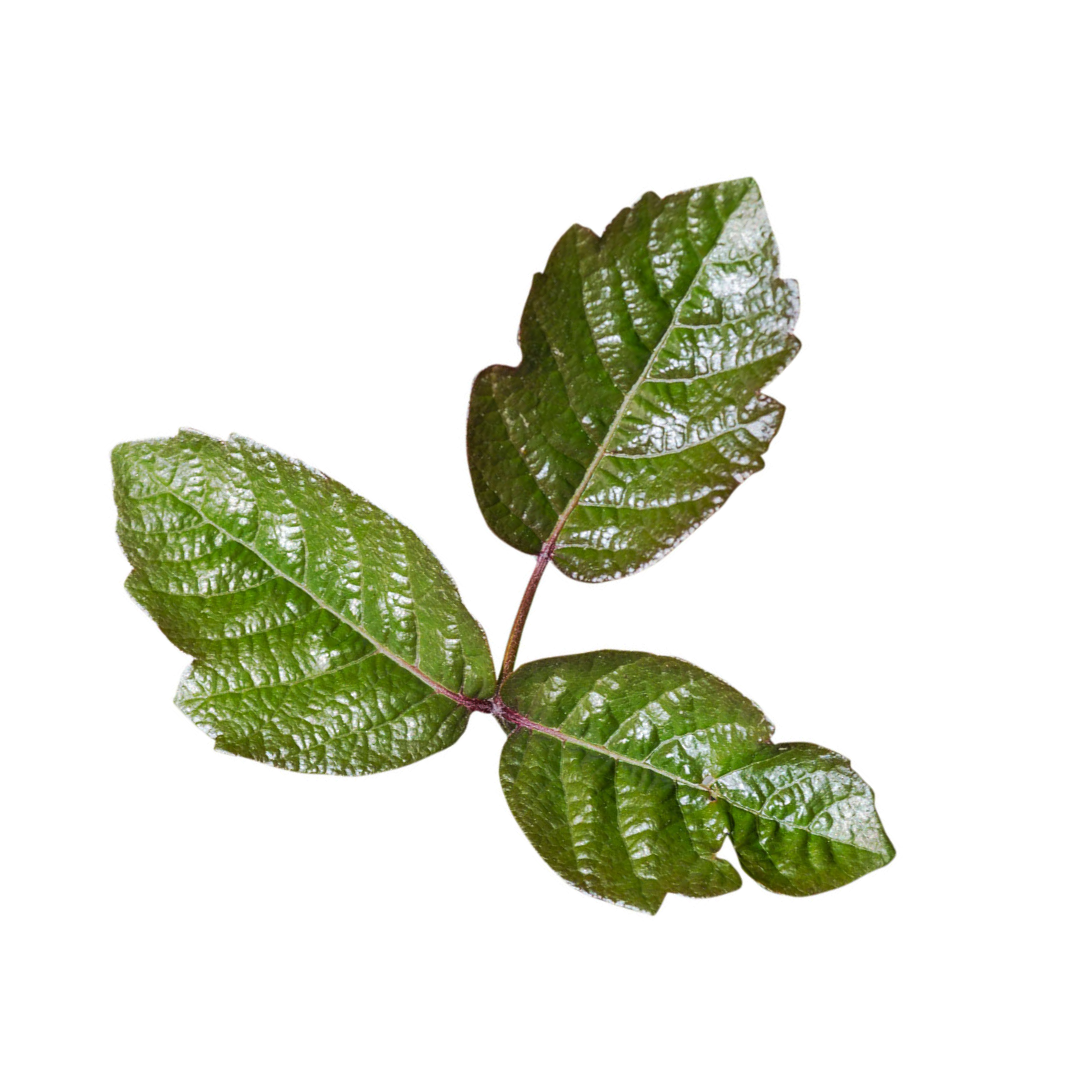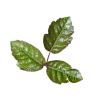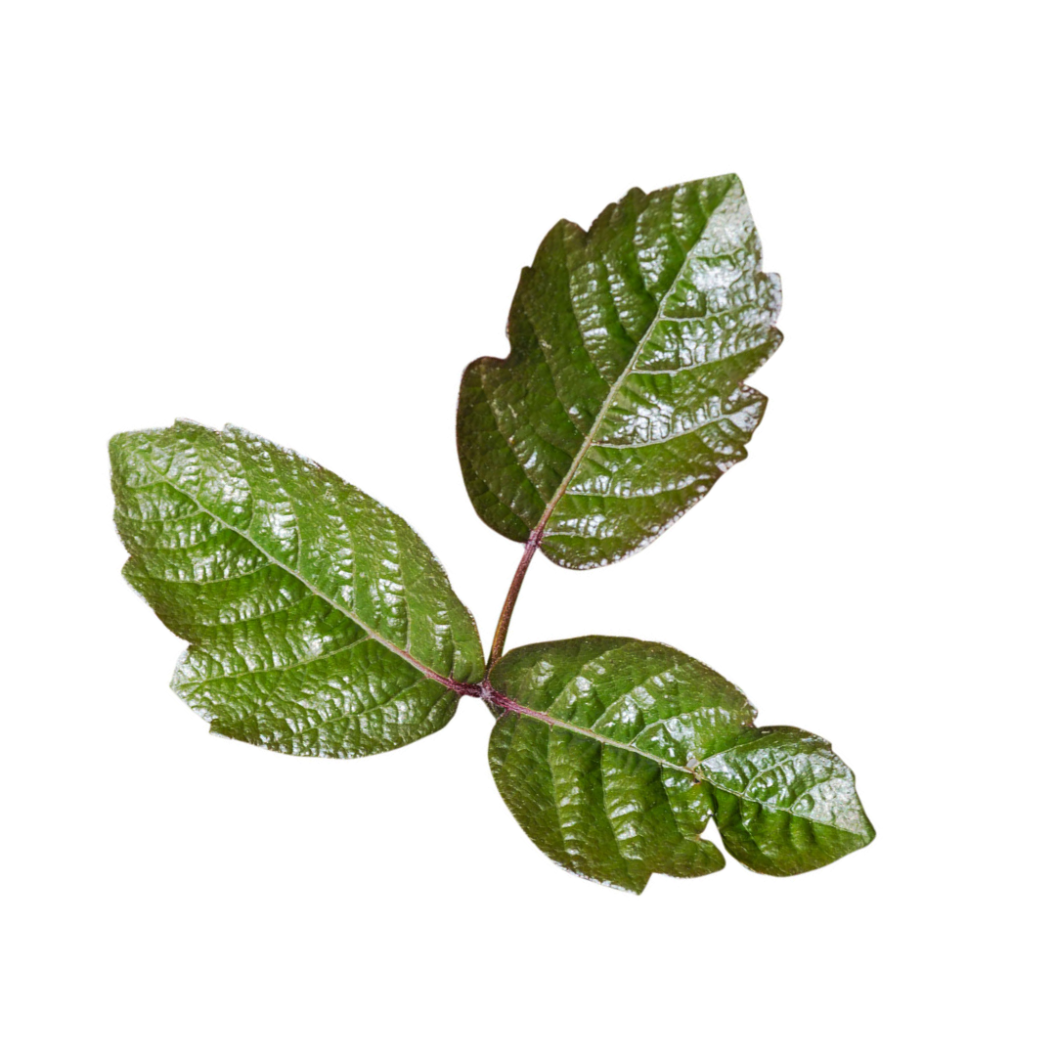





Poison Oak
DESCRIPTION: Like other members of its genus, poison oak is a very recognizable name of a woody vine or shrub that is commonly found in North America. It can grow up to six feet tall and (like poison ivy) has distinctive leaves that are typically arranged in clusters of three. The plant is covered in an oily resin called urushiol that causes and allergic skin reaction in many people who come in contact with the plant.
SCIENTIFIC NAME: Toxicodendron diversilobum
OTHER NAMES: Oakleaf Poison Ivy
LEAF TYPE: Broadleaf
FLOWERS: The flowers of the poison oak are small and not very showy. The plant produces small, greenish-yellow flowers that are arranged in cluseters or panicles. Once fertilized, the flowers develop into small, berry-like fruits that can be green or white at first, and then turn a light tan color as they mature.
LEAVES: The leaves of the poison oak are the most recognizable feature of the plant. They are green and glossy, and are typically arranged in clusters of three, although sometimes there may be more. The leaves have a distinctive shape that is often described as looking like the leaves of an oak tree sapling. The edges of the leaves may be smooth or slightly toothed, and the tips may be rounded or pointed. In the fall the leaves may turn red, orange, or brown before falling off the plant.
LIFE CYCLE: Perennial
HOW TO IDENTIFY: Poison oak can be identified by its distinctive leaves, which are arranged in clusters of three and have a glossy appearance. They look extremely similar to poison ivy. Poison oak can grow as a vine or a shrub and may be found in wooded areas, along trails, or in open fields. It is important to learn how to identify poison oak in order to avoid contact with it and prevent an allergic skin reaction.
MECHANICAL CONTROL RECOMMENDATIONS:
1. Hand pulling - More Info
2. Cutting and Removing - More Info
3. Mowing - More Info
4. Smothering - More Info
5. Grazing Animals - More Info
CHEMISTRY RECOMMENDATIONS:
"Pre-emergent herbicides:
Oryzalin: Oryzalin is a pre-emergent herbicide that can be effective against a range of broadleaf and grassy weeds. It can help prevent the germination of poison oak seeds, but it might not be as effective against established plants.
Pendimethalin: Pendimethalin is another pre-emergent herbicide that can be useful for preventing the growth of various weeds, including poison oak. It's important to follow the label instructions and apply it before the weed seeds germinate.
Isoxaben: Isoxaben is a pre-emergent herbicide that targets broadleaf weeds and prevents their germination. It might have some efficacy against poison oak when applied as directed.
Prodiamine: Prodiamine is commonly used to control grassy and broadleaf weeds in various settings, including lawns and landscapes. It can provide pre-emergent control against poison oak when used correctly.
Post-emergent herbicides:
Glyphosate: Glyphosate is a widely used systemic herbicide effective against a broad range of plants, including poison oak. It's a non-selective herbicide, meaning it can harm desirable plants as well, so care must be taken to avoid contact with non-target vegetation.
Triclopyr: Triclopyr is effective against many woody plants and broadleaf weeds, making it a good choice for controlling poison oak. It can be used as a foliar spray, but it's important to follow label instructions and use caution around desirable plants.
Aminopyralid: Aminopyralid is another herbicide that targets broadleaf weeds and woody plants. It can provide control of poison oak, but it should be used with care due to its potential persistence in the environment.
Imazapyr: Imazapyr is a systemic herbicide used for controlling brush, trees, and other vegetation. It can be effective against poison oak, especially when used as a basal bark treatment or in cut-stump applications.
Metsulfuron-methyl: This herbicide is effective on a variety of broadleaf weeds, including poison oak. It's important to use it with caution as it can also affect non-target plants if not applied properly.
Clopyralid: Clopyralid targets certain broadleaf plants and can provide some control over poison oak. Like other herbicides, it should be used according to label instructions and applied judiciously.
Selective herbicides:
Triclopyr: Triclopyr is often used as a selective herbicide for controlling woody plants and broadleaf weeds. It can target poison oak while being less harmful to grasses. There are formulations available that are designed for use on lawns and other grassy areas.
Metsulfuron-methyl: This herbicide targets broadleaf weeds and is sometimes used selectively in turfgrass areas. While it can provide some control over poison oak, it's important to follow label instructions and ensure compatibility with the grass species present.
Clopyralid: Clopyralid is a selective herbicide effective against many broadleaf weeds. It can be used in lawns to control poison oak, but it's crucial to follow label instructions carefully to avoid harming desirable grasses.
Quinclorac: Quinclorac is a selective herbicide used primarily for controlling broadleaf weeds in turfgrass areas. While it may have some effectiveness against poison oak, it's essential to test it on a small area first to ensure that it doesn't harm the grass.
Dicamba: Dicamba is another selective herbicide often used in lawns to control broadleaf weeds. It might provide some control over poison oak, but as with any herbicide, careful application and adherence to label instructions are crucial.
Non-Selective herbicides:
Glyphosate: Glyphosate is one of the most commonly used non-selective herbicides. It's effective against a wide variety of plants, including poison oak. Glyphosate works by being absorbed through the leaves and then transported throughout the plant's system. It's important to note that glyphosate can also harm desirable plants, so care must be taken to avoid contact with non-target vegetation.
Glufosinate: Glufosinate is another non-selective herbicide that can control a range of plants, including poison oak. It's often used in commercial and agricultural settings.
Diquat: Diquat is a contact herbicide that causes rapid desiccation of plants upon contact. It's less systemic compared to glyphosate, meaning it primarily affects the parts of the plant it directly touches. This can be effective for controlling smaller poison oak plants.
Pelargonic Acid: These herbicides contain fatty acids that work by disrupting the cellular membranes of plants, causing rapid dehydration. They can be used for spot treatments and can provide control over a range of plants, including poison oak.
Sodium Chlorate: Sodium chlorate is a non-selective herbicide that affects plant cells' ability to take up water, leading to desiccation. It's a powerful herbicide and should be used with caution due to its potential impact on soil and groundwater.
Triclopyr: While triclopyr is often used as a selective herbicide for woody plants, it can also be used as a non-selective herbicide for controlling various vegetation, including poison oak. However, it can harm desirable plants, so careful application is necessary.
Recommended Prevention
Recommended Control

